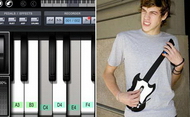Research of Key Technique on Digital Museum
Digital museum emerges under the background of the information era, presenting a new mode of managing and utilizing the cultural heritage. It stores and manages the natural and cultural heritage in digitized formats, offer digitization show, educate and various kinds of services of studying etc.
to user through computer network, it is a multi-disciplinary information service systems that merge, such as museology, dissemination and computer, etc. Research key technology on digital museum involves several new information techniques, include laser based measuring and three- dimensional scanning, content-based multimedia data retrieval, human-computer interaction on three-dimensional virtual scenes, setting-up and maintenance of very large multimedia database, Digital watermark and multimedia data encrypting, etc.
It has very important meanings to making use of modern scientific and technological means to show, protect and keep nature of the world and cultural heritage.In the project Digital Museum of Archaeological Studies of Northwest University of the special topic of Ministry of Education of modern education project (the project of national revenue), The key support technology that the digital museum involved is focused on and made research, by certain achievement, the mainframe of the thesis is as follows:1. An overall summary of Basic theories of digital museum are made. The genesis, development and current situation of the digital museum is illustrated from three respects, including basic conception, characteristic, advantage, and classification.2. A general system architecture and Web-Service based four layers distributing digital museum structure of digital museum is proposed. Current prevailing development mode of digital museum is summarized. A mode of new digital museum development based on shared VRML multi-user virtual environment is proposed and realized. To realize the interaction between humans and digital museum, this mode could generate three-dimensional scenes dynamically and a avatar could be controlled wandering in the scenes.3. A comprehensive criterion of resource coding reference and digitization criterion of media material lib content is set up. The collection information index system norm in the museum is put forward.
An approach of applying XML virtual data source technology to achieve high-efficient, high-speed and safe using of database is proposed, taking to account the huge amount, various types, rich content of the data, which the digital museum involves.4. The criteria and standards of two-dimensional information collections in the digital museum is posed; The process and characteristics of the prevailing three-dimensional scanner - FASTSCAN and INSPECK are summarized. The deficiency is pointed out and the corresponding treatment method is also given.
A new filter algorithm of three-dimensional data based on SUSAN algorithm is proposed. A kind of new true colored three-dimensional scanner is proposed and developed, which has several advantages like untouched scanning, faster scanning, tight corresponding between feature points and its color, true-color texture scanning, etc. This scanner is applied to the collection of cultural heritage three-dimensional information, and the results are remarkable.5.
The application of content-based on retrieval in digital museum is studied. To the characteristic ofhistorical relic picture, an approach of retrieval based on building divided pieces of fuzzy color histogram is presented. Combining border characteristic and regional historical relic picture, an approach based on form characteristic of characteristic index is also presented. An approach of utilizing Gabor filter to analyze the texture characteristic of the historical relic picture is proposed, exhibiting the directionality, roughness and regularity of historical relic picture texture successfully. An approach of three-dimensional model characteristic extraction and retrieval is presented and first applied to the retrieval of three-dimensional model in the digital museum. The algorithm has the feature of size inflexibility, rotate inflexibility.
The algorithm is steady, low complexity, suitable for real-time interactive application.6. Utilizing Digital watermark to protect the security of the digitized collection is studied. As to two-dimensional digital watermark, the spatial digital watermark algorithm of 2D true color images is improved, gaining the texture information of different areas via the texture autocorrelation function, imbedding different watermark information in various degrees to different sensitive degree of texture information according to human vision.
The robust of the spatial digital watermark algorithm greatly is improved greatly by given algorithm. Digital watermark is imbedded into intermediate frequency in the DCT-based watermark algorithm by analyzing the frequency domain watermark algorithm. FDCT transform is used to realize DCT transform in the digital watermark algorithm based on DCT, and transforming speed is improved greatly. Wavelet transform is realized by lifting scheme in DWT digital watermark algorithm. Daubechies9/7 as the transform base is Adopted. A new three-dimensional model watermark algorithm is proposed to embed three-dimensional model watermark by changing the relationship and position of three-dimensional points. It applied to the protection of digitalized three-dimensional model in digital museum.7.
Digital Archaeology Museum of Northwest University is designed and implemented.8. Research to computer technology application of archaeological studies is carried out. Digital archaeological concept and basic content are summarized. Via three respects - research background, general idea and technical route, the three typical application are researched and have achieved success -Computer Aided Historical Relic Restoration, Computer Aided Historical Relic Identify and Ancient Mankind’s Appearance Recovery is fully and accurately Illustrated, which enriches the meaning of digital museum.9. An overall prospect of the future research work to the digital museum is given.
Editor: Liu Xiongfei

